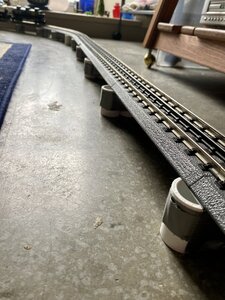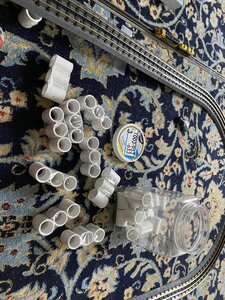Hmm...let's see (scratches head...bangs it a few times...) anything clear plastic from a package - stiff kind - works great for windows. Trurns out no one can see close enough to tell the thickness.
ALWAYS save lead foil from any source - very useful for tarps, odd shapes, etc.
I save wooden skewers, stirrers and all that kind of freebie stuff. Handy.
A used tea bag will provide you with metal perforated catwalk. Pin it, soak it in white glue solution, let it dry and cut to size. An old nylon will do the same, and you can switch it to the size grating you need.
Check out the cheap girls' jewelry in big box stores. All you want is the fine-link chains that come with whatever it is.
Look at everything you use and/or throw away - it's all potentially modeling material. Especially plastics.
Old spreads and stuff made out of chenille make great "bump" trees or bushes for covering a hillside. Old dish sponges are useful, too. I run one through the dishwasher and then microwave it before use.
You can mold small objects out of hot glue.
You can get enough small pill cups for small parts and paint mixing at a Dollar Store to stay happy for life! And they're cheap!
Dollar Store also sells very cheap packs of emery boards. Your wife can do her nails while you file what you're building.

Need thin aluminum for a project? Any used soda can will do. (Just remember that the inside is coated!)
Anytime you're driving on a dirt road, you;re in scale landscaping heaven, free of charge. And yes, we have a lot of them in my prt of the Colorado mountains. Some really interesting small rocks that make great "stand-out" boulders, too.
Last tip - never overlook cheap little kids' toys. They can be used, bashed or adapted to a lot of neat stuff.
Now if you all will excuse me, our pot bellied pig named Belushi wants to come back inside. He's smart but he can't do doors!



